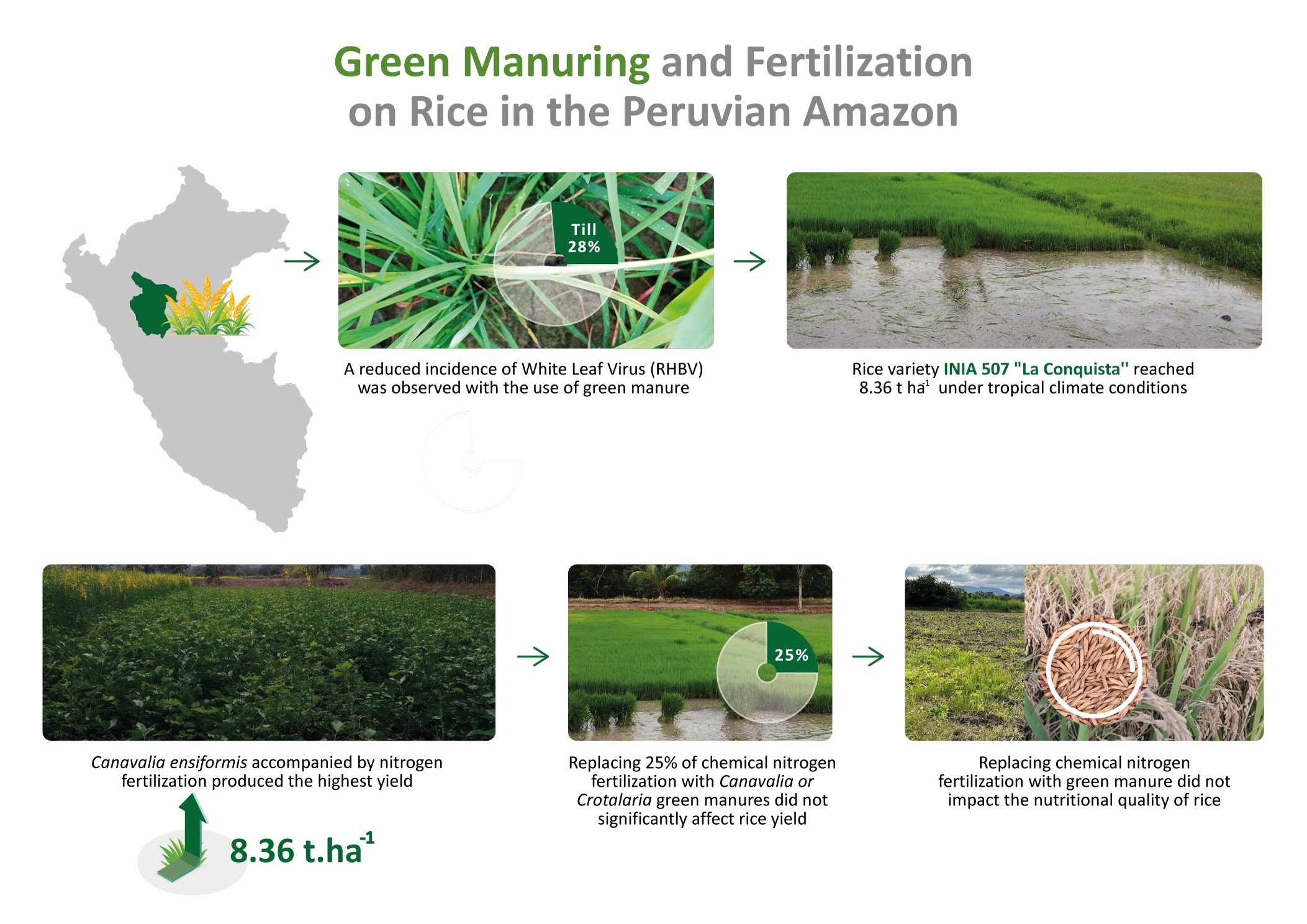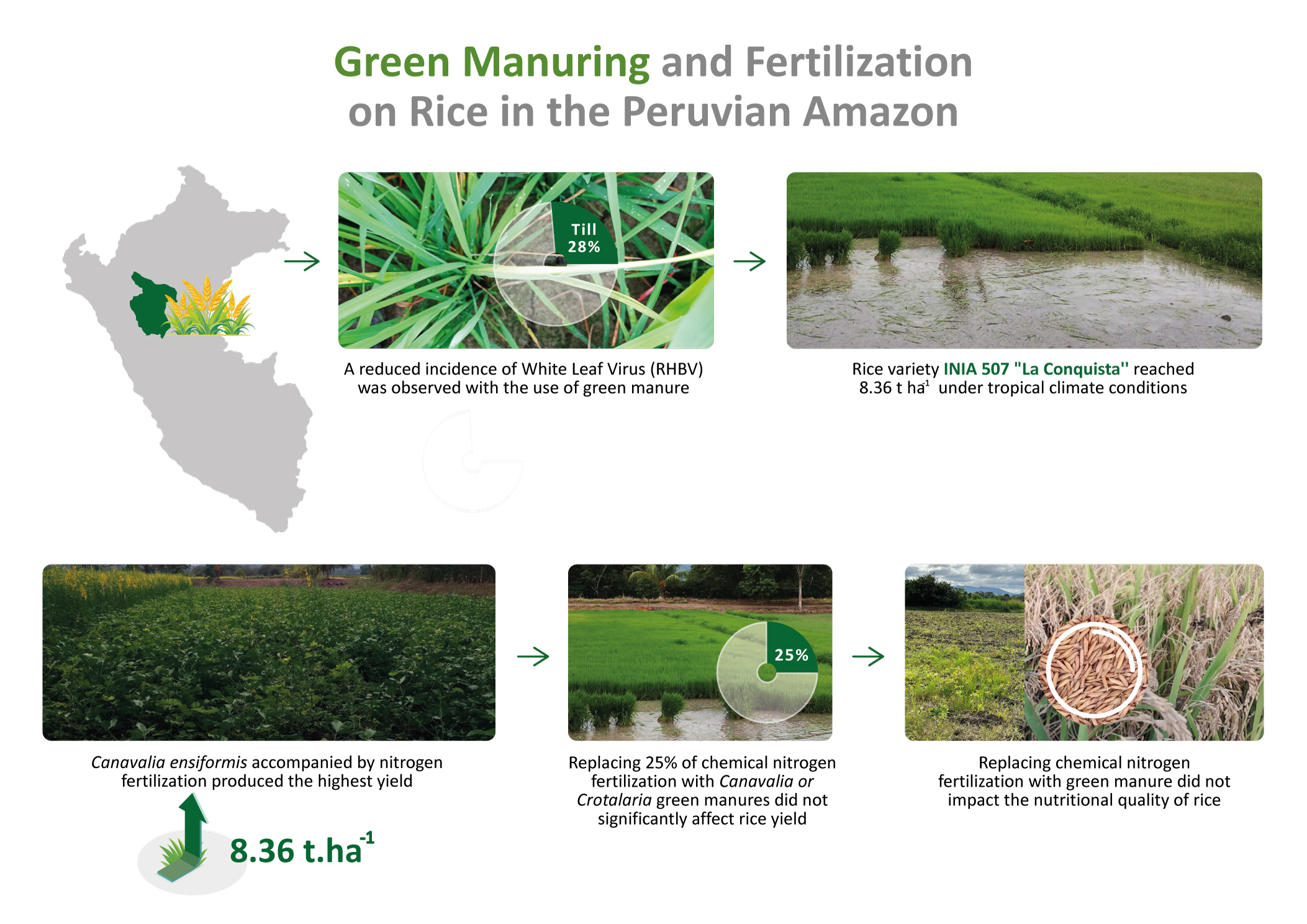Green manuring and fertilization on rice (Oryza sativa L.): a peruvian Amazon study
DOI:
https://doi.org/10.48162/rev.39.132Palabras clave:
parcela dividida, leguminosas, fertilidad del suelo, RHBV, agricultura regenerativaResumen

The study was conducted in Juan Guerra district, province and region of San Martin, Peru; it assessed two treatment sets: (1) nitrogen fertilizer dose (FN75, FN100); (2) green manure Crotalaria juncea (CroJ), Canavalia ensiformis (CanE), and without green manure. It was arranged in a split-plot design with four replications. During the experiment, we observed an important fluctuation in soil parameters. Notably, there was a decrease in soil carbon and nitrogen levels, likely attributed to microorganism metabolism. On the other hand, we observed that CanE significantly reduced the diseased tillers through “White Leaf Virus” (RHBV) by 2.82% compared to the control, and significant panicle fertility was achieved by CroJ (91.88%). No significant differences were obtained in yields during this first campaign; however, the highest reported yield was 8.36 t ha-1 with the CanE - FN100 treatment. Additionally, the nutritional quality of the rice was not affected by either green manuring or the application of chemical nitrogen fertilization. These findings allow deeper studies to consider strategic alternatives to reducing dependency on inorganic fertilizers among the poorest communities.
Highlights:
- A reduced incidence of White Leaf Virus (RHBV) was observed with the use of green manures.
- Rice variety INIA 507 "La Conquista'' reached 8.36 t ha-1 under tropical climate conditions.
- Canavalia ensiformis accompanied by nitrogen fertilization produced the highest yield.
- Replacing 25% of chemical nitrogen fertilization with Canavalia or Crotalaria green manures did not significantly affect rice yield.
- Replacing chemical nitrogen fertilization with green manure did not affect the nutritional quality of rice.

Descargas
Publicado
Número
Sección
Licencia
Derechos de autor 2018 Revista de la Facultad de Ciencias Agrarias UNCuyo

Esta obra está bajo una licencia internacional Creative Commons Reconocimiento-NoComercial-CompartirIgual 3.0.
Aquellos autores/as que tengan publicaciones con esta revista, aceptan las Políticas Editoriales.



